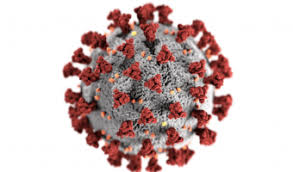Is Your Exercise Causing Good Or Bad pain? How To Tell

Athletes, fitness buffs and novices alike all know the saying, ”No pain, no gain.” To some extent, this saying is true. Weight-bearing and cardiovascular activities stress the body. As a result of that stress, we enhance our strength and endurance. By pushing our physical boundaries, we optimize our athletic performance. But this process is almost always at the cost of feeling some level of pain.

How do we know if the pain we are experiencing is normal, or if the pain is far more serious and due to an injury?
What is good pain?
Good pain, believe it or not, does exist. The most common type of good pain is the burning muscle pain you experience while performing an activity such as weight lifting. This burning sensation ends immediately after you stop the activity. The cause is a buildup of lactic acid, a natural byproduct of exertion that your muscles produce.
Delayed onset muscle soreness (DOMS) is another common pain. DOMS is a generalized ache that begins after your workout. The feeling may begin at a few hours after your workout or up to a couple of days later.
You most likely will experience DOMS when you begin a new exercise to which your body is unaccustomed, or if you have increased the intensity of your workouts.
Injury to muscle fibers and connective tissues, which you can see only under a microscope, occurs because of the stress of the exercise, which is the culprit of this generalized ache.
DOMS typically resolves within a day or so. It does not impede your ability to perform normal daily activities or keep you from moving your limbs and joints.
Pain that you shouldn’t ignore
While there are instances when you can expect pain from exercise, always take caution if you feel pain coming on while you work out or if the pain persists afterward. Serious injuries such as a stress fracture or tear could be the reason for this pain — and you should seek medical attention.
Here is a list of pain conditions that should not be ignored and merit a visit to your doctor:
- Sharp pain that prevents you from moving a body part, decreases your range of motion, or prevents you from moving altogether.
- Pain in an area that was previously injured or where you’ve had surgery.
- Pain associated with deformity or massive swelling.
- No pain relief after several days of rest, ice or over-the-counter anti-inflammatory medication.
- Constant pain or pain that is worsening in severity.
- Pain coupled with pressure and bruising.
- Pain that is so intense that it causes nausea and/or vomiting.
- Pain associated with fevers and chills.
Use the proper technique
Recurring pain connected with sports often is due to incorrect form or technique. If you can catch these errors early, you can retrain yourself so that you avoid re-injury or chronic recurrences.
I always recommend that serious athletes seek assessment by athletic trainers or physical therapists in a clinic that specializes in your sport. This way, you will receive expert advice that can help you achieve your best results — without pain.




